Description
Name in North American Boletes: Boletus projectellus
Genus: Aureoboletus
- Genus 2: Boletus
- Genus 3: Boletellus
- Genus 4: Ceriomyces
Species: projectellus
Common Name:
Tells: Cap flesh tastes lemony. Well-netted red to brown stem. Likes sandy soil and pine, esp. Scots Pine. Cap edge projects past the pores to form a ridge.
Other Information: Yellow pores age toward brown & bruise lemon yellow. Cap shape often shifts from from a hamburger bun to a “cupcake” shape as the tubes extend in maturity. Cap surface often cracks in age. Stem is viscid when wet, and often has a visible white mycelium. White cap flesh often has a rosy tinge & slowly stains yellow-brown. An eastern version of the Admirable Bolete (Aureoboletus mirabilis).
Science Notes: DNA testing moved this mushroom into the newly erected genus “Aureoboletus” (“Aureo” from the characteristic sunny-yellow pores). Reports have been received that this species has hopped the pond and can now be found in Europe too, particularly along the Baltic Sea but with a range that spreads hundreds of miles inland.
Edibility: Good. Reported to be much better when fresh.
CHEMICAL TESTS:
- NH4OH (Ammonia): No reaction.
- KOH: No reaction.
- FeSO4 (Iron Salts): Cap surface turns olive. Cap flesh turns pale gray.
Links:
 |
570 |  |
305 |  |
139 |  |
65 |

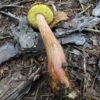
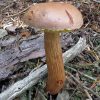

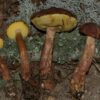
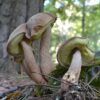
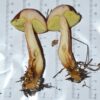
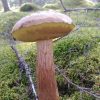
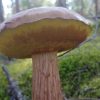
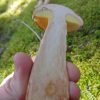
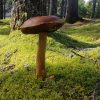
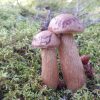
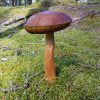
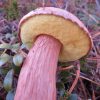
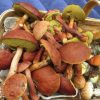
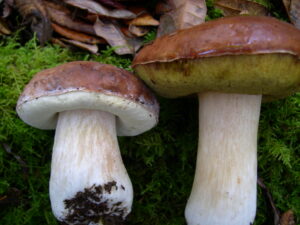
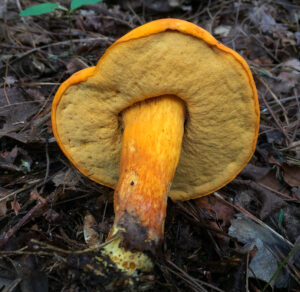
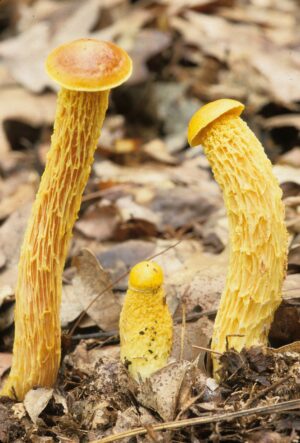
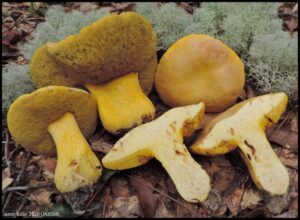
Got something to discuss?
I’m certain this is what comes up in the pine mulch at Wyomia Tyus Park in Griffin, GA, on the islands in the parking lot. There are actually two species there, one bruises somewhat blue, the other not, both with bright yellow pores and both taste strongly of lemon. There are bitter boletes nearby. I’ve cooked them (having tasted them, and research shows nothing toxic that resembles them) with pasta and shrimp, also with chicken, the texture is crisp and meaty after cooking, the lemon flavor goes well with many foods. They also pickle well.
Have you got a photo to share? It’s definitely been found in North Carolina so you aren’t that far off geographically.
I found this in Nova Scotia last fall.
Thank you for letting us know, and for sharing your photos. The find has been confirmed and the range extended. Experts tell me that you’ll likely find more of them if you focus your search around pines, particularly scots pine.
I found a bunch in Cape Cod among younger lines growing in dunes.